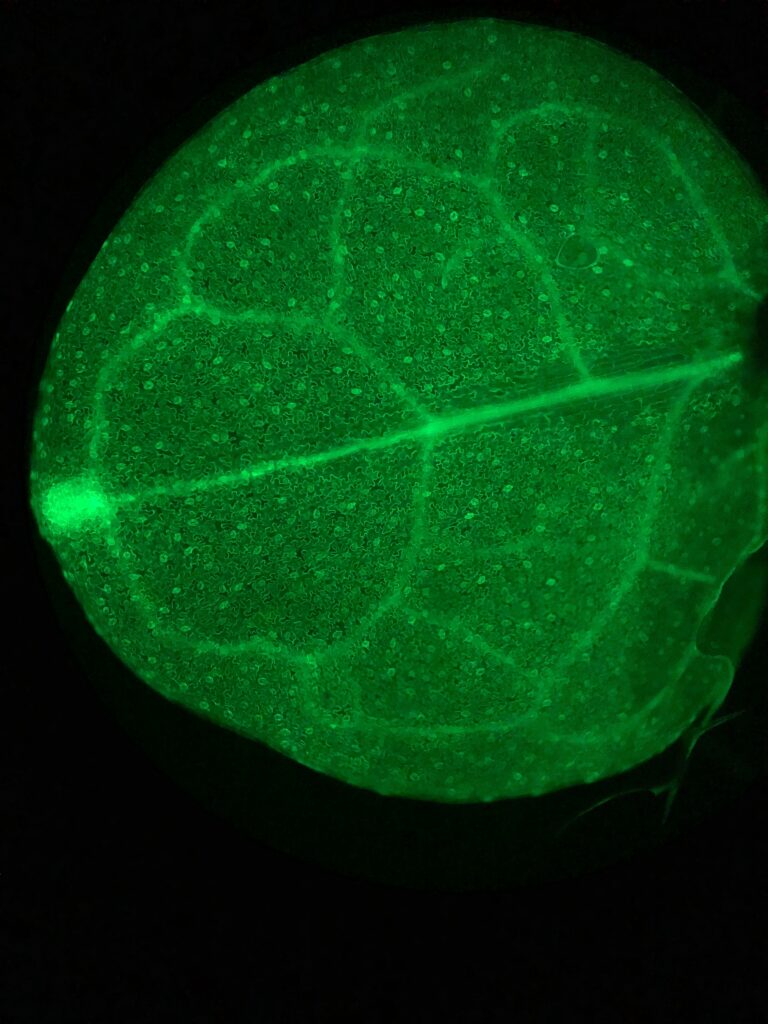
About the author:
Regina Bedgood (she/her) earned her BS in Biology with a minor in Chemistry at UAB and is currently a PhD student in Dr. Karolina Mukhtar’s lab at UAB where she studies molecular plant biology. Specifically, she researches biotic and abiotic stress of plants using Arabidopsis thaliana as a model organism. In her spare time, Regina enjoys keeping planted aquaria, rock climbing, spelunking/caving, skateboarding, and photography. You can find her @reggieb126 on Instagram.
When you think of tumors, what is the first thing that comes to mind? Is it plants? Probably not.
Well, it turns out plants get tumors too. They are caused by a group of bacteria called Agrobacterium. Just like tumors in animals, they are the result of uncontrolled cell growth. You may have seen these tumors on trees, often referred to as crown gall (Citovsky, et.al., 2006; Nester, 2015).

But how exactly does Agrobacterium cause these tumors? Genetic engineering!
Crown gall has been observed for decades but was not always understood. It took a long time to go from the first observations of plant tumors to the discovery that bacteria were inserting DNA into the plant’s genome. The delay was likely because it is an incredibly rare phenomenon in nature; in fact, this example of bacteria mediated genetic engineering was the first-time bacterial DNA was observed being transcribed by a eukaryotic cell, and it is now common in research labs (Nester, 2015).
As these bacteria were further studied, it became clear that Agrobacterium plasmids (small circular pieces of DNA) were the source of DNA being inserted into plants (Citovsky, et. al., 2006; Nester, 2015). These Agrobacterium, plasmids contain multiple genes with instructions for infection, insertion of DNA into the plant genome, and tumor formation.
But bacteria are not the only organisms with an interest in genetic engineering of plants. Over time, scientists modified the Agrobacterium infection plasmid such that a specific DNA sequence can be inserted into the plant genome. They accomplished this by removing the tumor causing portion while keeping the ability to insert DNA into a plant’s genome. (Citovsky,et. al., 2006; Nester, 2015).
Today, plant biologists like myself routinely use plants modified by an Agrobacterium to study genetics and cellular biology. This can happen in two main ways:

1.) Using Agrobacterium to insert a new gene into cells. For example, fluorescent protein can be inserted (Figure 2) which allows researchers to visualize where proteins are located and how much is being made within a cell. To learn more about how such transgenic plants are used in research, see my previous blog post titled “How can glow-in-the-dark stars help us understand plant immunity?”
2.) Using Agrobacterium to interrupt a gene already found in a plant. This works by inserting a piece of ‘nonsense’ DNA into a gene, which disrupts the genetic instructions resulting in an improperly constructed protein. This is like if somebody were to ask you to bake a cake and then rip off half of the recipe—there’s no chance it would not come out right. Arabidopsis thaliana, the plant I study, is a model organism with many resources available. One of my favorites is the Arabidopsis Biological Resource Center. This is a library of seeds with a T-DNA insertion. As a researcher, I can go onto this website and order seeds with a T-DNA insertion in a gene I want to study. For example, I have a plant line with an insertion in an aquaporin gene (aquaporins are small channels that allow water and certain other molecules to move through them) which results in a plant that looks completely different from the wild-type
This bacteria’s unique ability to cause tumors in plants now serves as an incredible tool for scientists to genetically engineer plants leading to countless discoveries. So, in your opinion, is Agrobacterium a friend or foe?
References
Citovsky, V., Kozlovsky, S. V., Lacroix, B., Zaltsman, A., Dafny-Yelin, M., Vyas, S., Tovkach, A., & Tzfira, T. (2006). Biological Systems of the host cell involved in agrobacterium infection. Cellular Microbiology, 9(1), 9–20. https://doi.org/10.1111/j.1462-5822.2006.00830.x
Nester, E. W. (2015). Agrobacterium: Nature’s Genetic Engineer. Frontiers in Plant Science, 5 (Article 730). https://doi.org/10.3389/fpls.2014.00730



